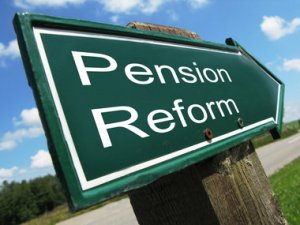 Tax issues and positions are always used as rallying calls by both Liberals and Conservatives in the propaganda wars leading up to important elections. Taxes, the programs they would support, and who will make tax policy are usually central themes of both Democrat and Republican voter outreach.
Tax issues and positions are always used as rallying calls by both Liberals and Conservatives in the propaganda wars leading up to important elections. Taxes, the programs they would support, and who will make tax policy are usually central themes of both Democrat and Republican voter outreach.
I am no tax expert, not a financial analyst or consultant. But I know how much in taxes I pay … to Uncle Sam, the Commonwealth of Pennsylvania, Montgomery County, Horsham Township, and the City of Philadelphia (for the “pleasure” of using roughly a mile-and-a-half of city roads twice-a-day in The Good Old Days, when we could actually go into work).
To help those who may have difficulty grasping the reality of election year tax claims of Democrats, this post will discuss my personal viewpoints on …
- Raising taxes “only on the Wealthy“.
- President Trump‘s tax record

Raising Taxes “only on the Wealthy”
Democrats, led by presidential candidate Joe Biden and running mate Kamala Harris, love to tell us how The Rich are not paying their fair share in taxes. They have no qualms claiming that taxing The Rich – and The Rich ONLY – will pay for their heavily-loaded Santa’s sleigh of social and environmental programs.
Here are the most expensive programs Democrats will tell you “taxing The Rich” would pay for:
- Medicare For All
- Free college education and the absolution of current college debt
- Green New Deal
Now let’s look at the estimated costs for just those programs:
- Medicare For All – $3.2 trillion per year (High estimate taken from the Bernie Sanders model)
- Free college education – $75 billion per year add in one-time bill for $1.5 billion student-debt forgiveness
- Green New Deal – $500 billion per year (A very conservative estimate, on which I place a very low level of confidence, used here just for argument simplicity.)
For those not keeping score, that’s a whopping $3.8 TRILLION dollars a year! Don’t forget that $1.5 billion in student loan forgiveness!
That’s a hefty tax bill. But The Rich will pay for it all, right?
Let’s see …
The Biden Plan calls for taxing The Rich only (i.e. those individuals and Corporations with revenues over $400,000 per year). The estimated additional revenue for such a change would be $3.67 billion per year.
That’s Billion with a B, not Trillion with a T! And I will add, the linked article supports the Biden-Harris claim that no one under the $400,000 annual salary/revenue will see increased taxes!
How is such a thing possible?
It’s not … quite obviously. Well, maybe if they are using Common Core mathematics.

Even if Democrats were to drastically cut the Department of Defense budget ($800 billion a year) and abolish Immigration and Customs Enforcement (ICE … $7.6 billion per year), potential financing via US Budget cuts would NEVER get close to the annual $3.8 trillion Liberal Wish List Price Tag!
It doesn’t take a member of MENSA to figure out where the responsibility of the rest of the price tag falls. That is, YOU and ME!
The kicker? The inevitable increase in Taxes is only part of the nightmare!
Consider these points:
- Corporations are responsible to Share Holders, and Share Holders like Profits! Where do you think Corporations are going to look to pay for their dramatically increasing tax burdens? Answer: Higher prices to Consumers (That is, YOU and ME!)
- Remember that Democrats are huge proponents of raising the Minimum Wage across the Nation! Who gets to pay the costs of those increases to wages? Answer: Higher prices to Consumers (That is … Well, hopefully you get the message by now)
- Democrats have also been strongly opposed to the Trump Tax Cuts, which widely fueled the pre-COVID economic resurgence. Certainly, add the loss of those tax cuts to your family’s budget.
- Don’t think your State and Local taxes will be affected? If goods and services become more expensive to Mr. & Mrs. Consumer, they were certainly be more costly to our Governments! Who pays that? You know the answer!

Now my arguments may not be perfect. I may have missed a few items that might close the Cost-Revenue gap a bit; and I welcome any viewpoints that might provide a more accurate picture. I would be shocked if anyone can convince me that Democrats can sufficiently close that gap to the point where they can prove that the majority of The Non-Rich will not pay a lot in higher taxes if Democrats control all the levels of Government!
Prove me wrong!
President Trump does not pay his Taxes
No one likes paying more in taxes. Liberals will say they have no problem with paying higher taxes, but I would call bull shyte on such a claim. It goes against Human Nature!
Taxes are a part of Life. They pay for a lot of necessary and critical services. We all get that. But there is a fine line between reasonable tax burdens and economy-strangling tax debt. Just look at how the Trump Tax Reductions lit a fire under the pre-COVID U.S. Economy!

I doubt anyone looks at their annual tax returns and wonders, “Gee, how could I pay MORE to help the (federal, state, local) Government?” Yes, it goes against Human Nature!
I always look to lower my tax burden any way I can within The Rules provided.
In fact, I plan to submit a hefty Tax Rebate request to the good City of Philadelphia to reclaim the wage taxes I paid there while not actually working within the City (COVID-19 wise). The City in past years allowed such claims when Wage Tax Payers spend working hours outside the city (i.e. when traveling for work, normal pre-COVID work-from-home, conferences/training outside Philly, etc.
So, when Donald Trump looks to reduce his immense tax burdens, which he – and his corporations – will have already paid on levels and in amounts Working People could hardly imagine, is he really doing anything wrong?
Note that not a single report suggests The President broke any tax laws, which certainly would have been revealed well before he ran for president the first time. (BTW … This massive IRS breach of private, personal information will be found illegal, and should rightfully concern every U.S. Tax Payer!) Even the lengthy, pre-informed, pre-planned New York Times article specifically states no tax laws were broken.
So what’s all the hubbub about, bud?
OMG! A billionaire looked to avoid paying taxes?!? What is the World coming to?!? Get out the rail, tar, and feathers!!
Please …
This is all about the attempt by Democrats to force a wedge between a very smart business man/President and Working Families, who also do everything they can – year-after-year – to reduce their Tax bite …

Don’t be fooled.
Consider the following:
- In 2005 alone Donald Trump paid $38 million in taxes. That’s just one year in the life of a man largely responsible for hundreds of millions in real estate and casino developments, as well as his activity in television!
- In 1995, Trump declared a loss of almost $916 million, largely the result of disastrous business losses in the early ’90s.
Some will look at that report and claim it proves Trump was no business genius. But there is always immense risk involved when conducting businesses all over the world in the financial stratosphere in which DJT operated. Huge losses and bankruptcies are part of the landscape where not all factors are under the control of any business.
So where does this leave us? If you have a problem with Citizen Trump paying only $750 in income taxes, blame the Tax Code, created with the help of many a rich Democrat.
To what extent should any U.S Tax Payer willfully pay more in Taxes than legally required? Trick question, I hope!
When Democrats tell you “only the Wealthy will pay more in taxes”, are they being honest? When “the rich and corporations” pass along the costs of additional tax burdens to their customers, are you OK with paying what is essentially an indirect tax?
The math doesn’t lie when it comes The Cost of Liberal Wishes and Dreams. So who is really trying to fool whom?
 One of the more fascinating aspects of my employment within the largest military organization on Earth is the occasional opportunity to peak behind the scenes at the infrastructure that maintains the US Navy and Marine Corp capabilities. Due to a recent assignment to attend a training event held at the Navy’s Coronado, California, I had the chance to learn about a limited facet of Fleet support … The aircraft repair and refurbishment facilities at
One of the more fascinating aspects of my employment within the largest military organization on Earth is the occasional opportunity to peak behind the scenes at the infrastructure that maintains the US Navy and Marine Corp capabilities. Due to a recent assignment to attend a training event held at the Navy’s Coronado, California, I had the chance to learn about a limited facet of Fleet support … The aircraft repair and refurbishment facilities at 
 I had been to several commercial defense facilities in my Navy aircraft support experience (e.g. McDonnell-Douglas, Sikorsky). But I had never seen a facility as clean, well-defined, exacting, and organized as the repair and refurbishment operations at FRC Southwest! Even the floors were clean enough to eat off.
I had been to several commercial defense facilities in my Navy aircraft support experience (e.g. McDonnell-Douglas, Sikorsky). But I had never seen a facility as clean, well-defined, exacting, and organized as the repair and refurbishment operations at FRC Southwest! Even the floors were clean enough to eat off. Meanwhile, back at FRC Southwest, we viewed
Meanwhile, back at FRC Southwest, we viewed 







